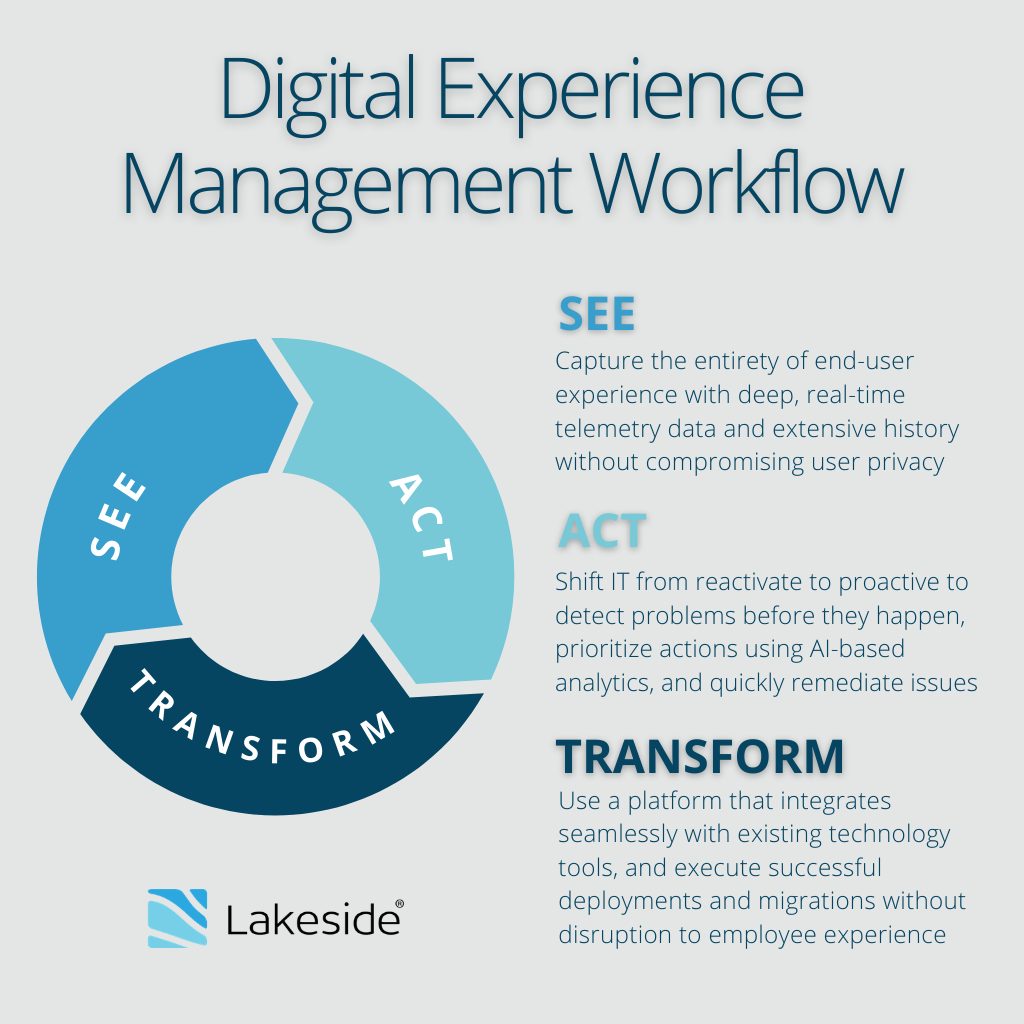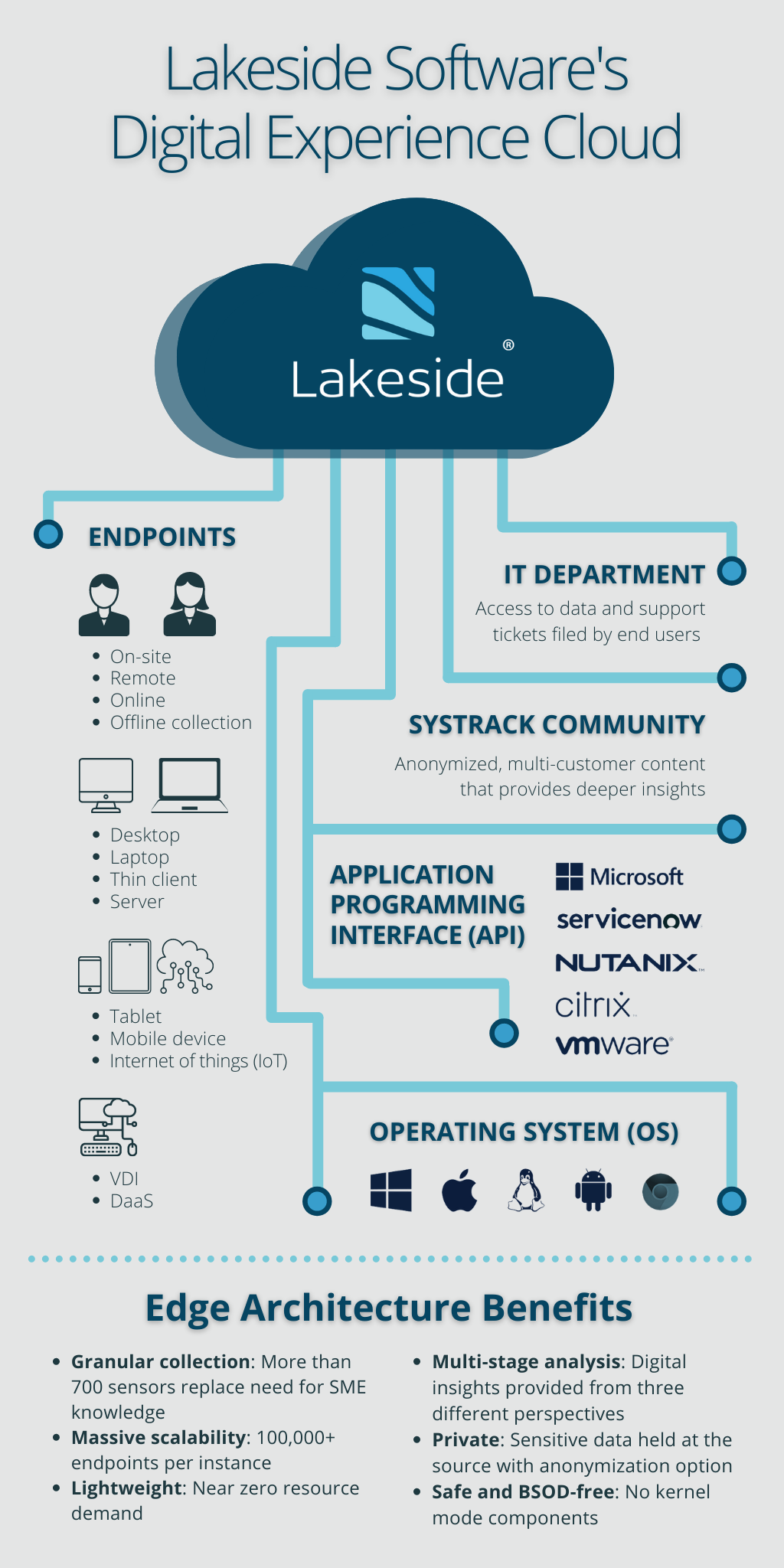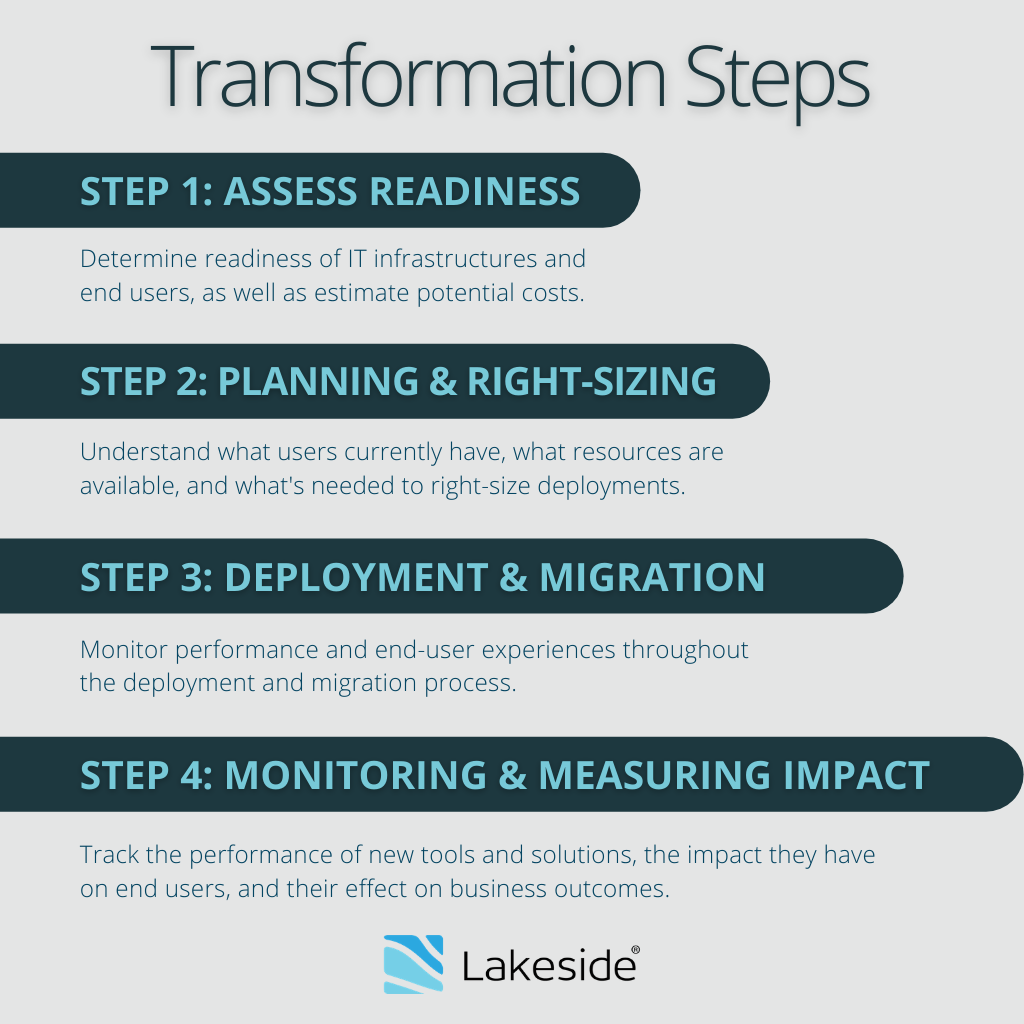
Assess, plan, and optimize solutions that improve your organization’s digital employee experience strategy
This is the last in a three-part series focusing on the core tenets of managing digital employee experience. Also read “Part I: Focus on Visibility” and “Part II: Make IT Proactive,” and discover even more by visiting our DEX landing page.
IT departments are juggling quite a bit these days, to say the least.
In one hand is a constant focus on IT visibility, especially with dispersed employees accessing networks, data, and resources from home, the office, and everywhere in between. In the other is a continual process of providing proactive IT support for these spread-out workforces to quickly identify, solve, and even prevent problems that could halt productivity.
And up in the air are new solutions and cutting-edge technologies that could improve these efforts and even enhance digital employee experience (DEX) with careful assessment, planning, and deployment. Problem is, there isn’t always enough time, resources, or personnel to make these projects happen, let alone make them successful.
But organizations can’t just drop the ball on transformation. Not when maintaining growth and a competitive advantage depends on technology innovations that help employees do their jobs more effectively and lead to better business outcomes.
Enterprises can give IT departments a hand juggling everyday operations and transformation with one solution: digital experience management.
Reaching a Transition Point with DEM
What did digital environments typically look like 10 years ago? Five years ago? And how does that compare to now?
Sure, the sudden shift to remote work during the early onset of the Covid-19 pandemic in 2020 is probably the most striking example of how digital environments have changed. But other advancements — such as migrations to new operating systems, adoption of SaaS, virtualization, and cloud-first strategies — might also spring to mind.
Because IT estates don’t stay the same for long. They’re always evolving to support new technologies, new strategies, and new priorities, including digital employee experience.
But before any innovative leaps can be made, organizations first need to build a solid foundation.
That requires full visibility across complex digital environments and beyond — especially with a remote workforce continuing to work outside corporate networks. It also means having a proactive IT support strategy in place that not only quickly resolves issues but also anticipates problems and lowers the overall number of incidents to begin with.
Essentially, organizations need digital experience management — a process of analyzing usage and performance data across devices, structures, and services to understand the quality of users’ digital experiences and determine methods to improve them. Simply put, DEM looks at how work technology affects employees’ productivity and how it can be improved.

By continuously gathering and analyzing metrics — including hardware and app performance, connectivity, app or system faults, resource usage — directly from endpoints, IT teams have a clearer view across digital environments and better insights into how to reshape the landscape. And with expanded IT visibility and proactive support in place, IT teams can consistently maintain good digital experiences.
But that can only take organizations so far. New challenges and goals will always need new technology, automation, integrations, cloud solutions, or other wish-list transformations that raise organizations and digital employee experience to the next level.
And when organizations are finally at a point to make those necessary transitions, they’ll need data-driven insights and tools to not only demystify the transformation process but also help cut costs and avoid pitfalls along the way, too.
How DEM Facilitates Transformation
Digital experience management makes transformation possible in a few different ways.
First, end-user experience monitoring and proactive IT support work together to improve the digital employee experience. And the happier and more productive employees are, the fewer support tickets need to be filed; the less time IT teams spend on investigating and troubleshooting issues; and the more resources and personnel are freed up to focus on other projects.
Second, DEM provides more opportunities for asset rationalization, which allows IT to inventory and optimize used resources as well as eliminate costly and unnecessary hardware/software that can be a burden to maintain.
And finally, there’s the most direct way digital experience management can facilitate transformation — by guiding IT through the entire lifecycle of the project.

With a comprehensive DEM solution, such as Lakeside Software’s Digital Experience Cloud, organizations have the depth and breadth of data needed to assess, plan, deploy, and monitor transformations successfully. Using a lightweight agent at the endpoint, our SysTrack-powered platform securely captures more than 10,000 metrics every 15 seconds from the edge to provide both real-time data and historical context for carrying out:
- Virtualization
- Operating system migrations
- Third-party integrations
- Desktop transformations
But how exactly does a rich repository of data turn a project idea into a reality? Here’s a closer look at how Lakeside’s solution plays a role in every step of the transformation process:

1. Readiness assessment
With better visibility of endpoints across digital environments, IT teams can confidently make that critical first-step decision: Are we ready for this kind of transformation?
Using up-to-date data and free assessments — including those for Windows Virtual Desktop, Windows 10, VMware, Citrix, and remote work planning — Lakeside can help organizations gauge the readiness of their infrastructures as well as their end users, and even estimate potential costs more accurately.
2. Planning and right-sizing
Determining whether an organization can pull off a transformation is one thing. Actually getting end users and the digital infrastructure ready for it is quite another.
With complete visibility of devices and software within the environment, as well the as the ability to segment users into personas — or groups of users based on similar needs and work styles — IT can understand what users currently have, what resources are available, and what’s needed to right-size deployments.
3. Deployment and migration
Even with the best laid plans, outages and system faults are a risk. The smallest issue or amount of downtime can end up costing employees and organizations productivity. And — worst of all — post-rollout disruptions to digital employee experience can cause an entire project to be scrapped.
Constant monitoring of hardware and app performance, resource usage, and even end-user experience scores throughout the deployment/migration process not only alert IT to these potential issues, but also allow for quick remediation and proactive support.

4. Monitoring and measuring impact
What does a successful deployment or migration look like? And how will IT know for sure?
While DEM enables organizations to monitor the effectiveness of new tools or solutions through metrics, it can also reveal the impact on end users and digital employee experience by collecting qualitative feedback and sentiment details.
And by establishing key performance indicators (KPIs), too, organizations can also track the impact these changes have on business goals and outcomes.
Better DEX for Better Outcomes
Driving transformation while maintaining day-to-day IT operations isn’t just an impressive juggling act. It’s also one of the ways organizations are fueling the digital experience revolution.
By advancing workplace technology — with edge computing, new integrations, and solutions that allow work to be done from any device from anywhere — IT leaders are also enhancing digital employee experience. And although helping employees seamlessly use technology to be productive is its own reward, there are also many business benefits that come along with it:
- Goal fulfillment: Happy and productive employees are more likely to get the job done — and possibly go above and beyond — than workers who are constantly frustrated with and bogged down by workplace technology. In fact, a recent research paper published by the University of Oxford’s Saïd Business School showed a 13% increase in productivity among happy workers.
- Recruiting and retention: Everyone expects a smooth digital experience these days, and the technology and IT strategies companies offer can greatly influence current employees and potential new hires.
- Business growth: Better experiences drive more innovative, higher-quality work, which helps organizations to expand and remain competitive.
- Cost savings and ROI: Being mindful of digital employee experience and giving IT tools they need to monitor, optimize, support, and transform digital environments can help lower costs and increase the return on investment in the long run.
But there’s plenty more DEX can do. And as long as organizations continue to transform, there’s no limit to the possibilities.
Subscribe to the Lakeside Newsletter
Receive platform tips, release updates, news and more



